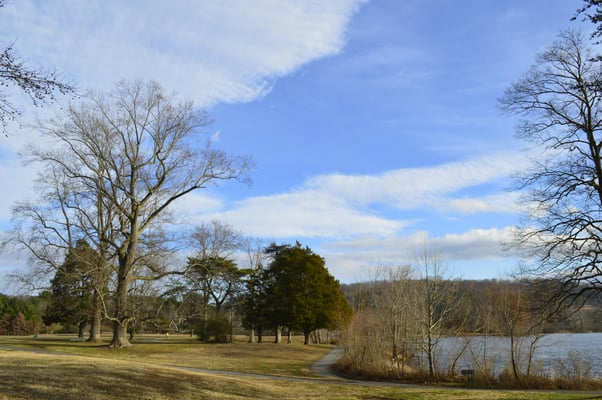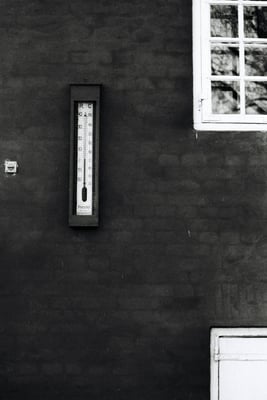Optimal Lawn Fertilization: Best Timing and Tips
Timing is crucial for keeping your lawn green, healthy, and beautiful. Knowing when to fertilize grass helps your lawn grow strong and resist damage from weather, pests, and foot traffic.
Different grass types and changing seasons affect the best times for nutrient application. This guide will provide the optimal schedule for each season. It will explain how temperature affects nutrient absorption and offer specific recommendations for your type of grass. By following these guidelines, you can maintain a healthy lawn all year round.
Seasonal Fertilization Guidelines
Spring
- Benefits: Applying nutrients in early spring helps your lawn recover from winter dormancy. It promotes vigorous growth and prepares the grass for the active growing season.
- Ideal Timing and Conditions: Knowing when to apply fertilizer to your lawn in spring is key. Apply nutrients after the last frost when the soil temperature reaches about 55 degrees Fahrenheit.
Summer
- Challenges and Tips: Summer heat can stress your lawn, making nutrient application more challenging. High temperatures can cause the grass to burn if not done correctly.
- Best Practices: Use a slow-release fertilizer to provide steady nutrients without overwhelming the grass. Water your lawn in the early morning to help nutrients reach the roots without causing evaporation. Avoid fertilizing during peak heat times, usually mid-day, to prevent burning.
Fall
- Importance: Applying nutrients in the fall encourages strong root development, helping the lawn store energy for winter and promoting early spring growth.
- Optimal Timing: Fertilize about six to eight weeks before the first expected frost. This timing allows the grass to absorb nutrients and build reserves. For cool-season grasses, early fall is best, while late fall works well for warm-season grasses as they prepare to go dormant.
Winter
- Considerations: In regions with mild winters, a light application of nutrients can keep your lawn healthy. However, in areas with harsh winters, it's best to avoid fertilizing during this time to prevent damage. For warm-season grasses that go dormant, winter fertilization is usually unnecessary.
Temperature Considerations
Impact of Soil Temperature on Fertilizer Effectiveness
- Soil temperature plays a crucial role in how effectively grass can absorb nutrients. Applying fertilizer when the soil is too cold or too hot can result in wasted effort and potential damage to your lawn.
- Ideal soil temperatures for fertilization range between 55 and 70 degrees Fahrenheit. This range ensures that grass roots are active and can absorb nutrients efficiently.
How to Measure Soil Temperature
- Use a soil thermometer to get an accurate reading of your lawn's temperature. Insert the thermometer about 2-4 inches into the soil and wait a few minutes for the reading.
- Take measurements in the early morning when the soil temperature is most stable. Measure in different spots around your lawn to get an average temperature.
- Alternatively, you can use this online tool to determine your soil temperature.
Guidelines for Different Temperature Ranges
- Below 55°F: Grass growth is slow, and nutrient uptake is minimal. Avoid fertilizing as it can lead to nutrient runoff and potential lawn damage.
- 55-70°F: Optimal range for most grasses. Feed to promote healthy growth and strong root development.
- Above 70°F: High temperatures can stress the lawn. Use slow-release fertilizers and water deeply to prevent burning and ensure nutrients reach the roots.
Timing Based on Grass Types
Cool-Season Grasses
Cool-season grasses have an active growth period during the spring and fall. Some examples of these grass types include fescue, Kentucky bluegrass, and ryegrass.
Best Fertilization Times:
- Early Spring: As soon as the soil temperature reaches 55°F, apply a balanced fertilizer to help the grass recover from winter dormancy.
- Late Spring: Apply a lighter dose of fertilizer to support continued growth.
- Early Fall: This is the most important time for cool-season grasses. Fertilize to encourage root development and prepare the grass for winter.
- Late Fall: A final application before the first frost helps the grass store energy and stay healthy during the winter months.
Warm-Season Grasses
Warm-season grasses have an active growth period during the summer. Some examples of these grass types include bermuda, zoysia, and st. augustine
Best Fertilization Times:
- Late Spring: As soil temperatures warm to about 65°F, fertilize to jump-start growth as the grass comes out of dormancy.
- Early Summer: Apply a balanced nutrient blend to support vigorous growth during the peak growing season.
- Mid-Summer: A lighter application can help maintain color and health during the hottest months.
- Early Fall: Feed one last time before the grass begins to go dormant, focusing on root development to sustain the grass through winter.
Time of Day for Fertilization
Morning vs. Evening Applications
- Morning: The best time to fertilize your lawn is early in the morning. The temperatures are cooler, and the grass is still damp with dew, which helps the fertilizer to be absorbed more effectively. Morning fertilization also allows the grass to dry out during the day, reducing the risk of disease.
- Evening: While evening feedings are an option, it is less ideal because it can leave the grass wet overnight, increasing the risk of fungal diseases. If you choose to fertilize in the evening, make sure to water the lawn lightly to help the granules settle.
Avoiding Midday Heat
- Fertilizing during the heat of the day can be harmful to your lawn. High temperatures can cause the fertilizer to evaporate before it has a chance to be absorbed by the grass. Additionally, the intense heat can burn the grass, especially if you are using a quick-release fertilizer.
Benefits of Early Morning Fertilization
- Cool Temperatures: Cooler morning temperatures reduce the risk of burning the grass.
- Dew: Morning dew helps dissolve the fertilizer and aids in absorption.
- Reduced Wind: Mornings tend to be less windy, which helps prevent the fertilizer from blowing away and ensures even distribution.
Additional Tips for Optimal Timing
Application Frequency
- Follow the recommended schedule based on your grass type and the specific product you are using. Over-application can harm your lawn and the environment.
- Cool-season grasses generally need 3-4 applications per year. Warm-season grasses typically need 2-3 applications during the growing season.
Watering Tips Post-Application
- Watering after applying nutrients helps them penetrate the soil and reach the grass roots.
- How Much to Water: Apply about 1/4 inch of water after nutrient application. This amount is enough to activate the product without causing runoff.
- When to Water: Water immediately after applying granular products. For liquid applications, follow the instructions on the label.
Conclusion
Applying nutrients at the right time is key to maintaining a healthy and vibrant lawn. By following seasonal guidelines, considering temperature effects, and understanding the needs of your specific grass type, you can optimize your lawn care routine. Early morning applications, proper watering, and choosing the right products ensure that your lawn gets the nutrients it needs without the risk of damage.
By adhering to these best practices, you will promote strong growth, robust root development, and a lawn that can withstand various stresses throughout the year. A well-timed nutrient application plan is an investment in the long-term health and beauty of your lawn.
Get a Quote
Tired of thinking about fertilizer? Let's get in touch.
-
Greensboro, NC
-
info@weedawaylawn.com
-
+1 336-962-7194